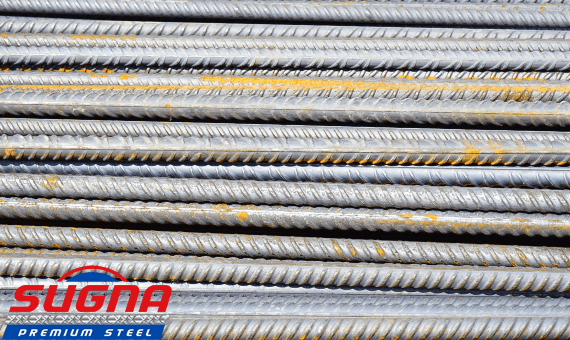Fee 500 and Fe 500D are two popular grades of steel used in building construction. While both of them may seem similar to a layman, the singular difference of a ‘D’ brings about quite significant variations in the properties of the two steel grades.
As per the IS:1786 standard, both Fe 500 and Fe 500D are types of TMT steel. The ‘Fe’ in both stands for Ferrous or Iron, which is the primary component of TMT bars. Figure ‘500’ signifies the yield strength of the bars in the measure of MPa.
Now here comes the differentiator. The letter ‘D’ in Fe 500D bars represents ‘ductility’, which essentially means that the Fe 500D TMT is more ductile as compared to Fe 400 TMT steel bars.
At Sugna TMT bars, let us know more about what this actually means and how the two types of TMT steel bars are different in effect.
FE 500 vs FE 500D TMT

What is Ductility?
Ductility can be defined as the tendency of the metal to get elongated. In other words, it is the property of the metal to get its shape changed. Steel with higher ductility can be easily drawn into different shapes, whereas it might be more difficult for steel with comparatively lower ductility.
Properties of Fe 500 and Fe 500D TMT
- Both Fe 500 and Fe 500D are characterized by a minimum of 0.2 percent proof stress/yield stress.
- When it comes to tensile strength, Fe 500D has about a 2% higher tensile strength as compared to Fe 500. The minimum tensile strength for Fe 500 is 545 MPa whereas it is 565 MPa for Fe 500D TMT.
- There is a significant variation in the % elongation of the two steel grades. Fe 500 has a minimum elongation of about 12% whereas Fe 500D has an enhanced elongation of up to 16%, which is quite significant when it comes to real-life applications.
Chemical Composition
Fe 500 grade TMT steel has a maximum of 0.30% of carbon in its chemical composition. Fe 500D, on the other hand, has a lesser proportion of carbon in it – about has 0.25% Similarly, the percentage of metals like Sulphur and Phosphorus is also lowered in Fe 500D as compared to Fe 500.
Other Physical Properties
The difference in chemical composition reflects in the physical properties of the two grades of steel, apart from just ductility. The D-grade TMT bars are easier to work around and use in complex construction designs. Further, due to a higher range of elongation, the Fe 500D has shown more resistance in the events of earthquakes, high-velocity winds, and other natural calamities.
Uses/Applications
- Fe 500 can be used in all regular construction projects like residences, flats, shops, and more.
- Fe 500D is more suited for use in high-end construction like skyscrapers, industrial plants, dams, etc.
- Fe 500D should be preferred for construction in earthquake porn areas, especially those falling in seismic zones 3,4, and 5.
Conclusion
If you are looking to procure TMT steel bars for your construction project, it is important to be aware of the subtle differences between the two popular steel grades – Fe 500 and Fe 500D. Equipped witty this knowledge, we are sure you will choose the right one as per your project requirements!

